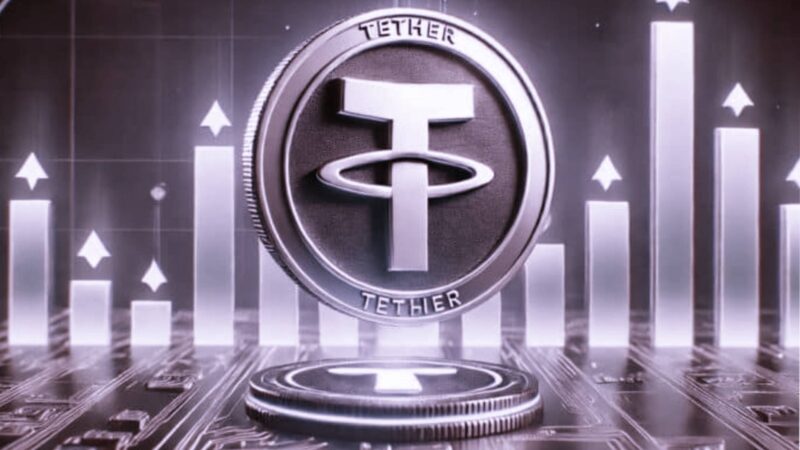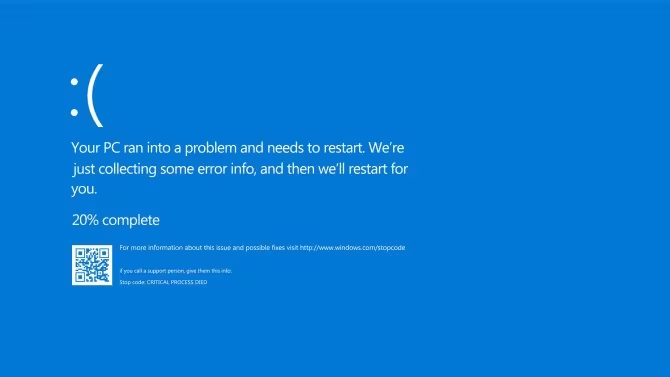The book that tells you everything about the technological revolution

Rory Cellan-Jones, one of the most renowned journalists in the field of technology, reveals the secrets, anecdotes and implications of the digital age in this extract from the first chapter of his book ‘Always ON’, published by Pinolia.
Technology has changed our lives radically in recent decades . From the invention of the smartphone, which has given us access to unprecedented computing power and connectivity, to the rise of social networks, which have transformed the way we communicate, inform and entertain ourselves, we live in an era of hyperconnectivity that has us It offers great opportunities but also great challenges.
What has this process of technological revolution been like? What consequences has it had for society, the economy, politics and culture? What can we expect from the future? These are some of the questions posed by Rory Cellan-Jones , BBC technology journalist for 40 years, in his recently published book ‘ Always ON: A personal chronicle of the rise, consequences and present of the technological revolution ‘. by Pinolia .
In this book, the author offers us a first-person account of key moments in the history of technology, from the appearance of Apple’s iPhone , which revolutionized the mobile phone market, to the Cambridge Analytica scandal, which put highlights the risks of handling personal data; going through the arrival of the COVID-19 pandemic and the outbreak of fake news . Through his experiences and interviews with the protagonists of this era, such as Stephen Hawking, Elon Musk , Tim Berners-Lee or Mark Zuckerberg, Cellan-Jones shows us how technology has affected all areas of our lives, since our democracy. even our jobs and our health.
The book is a personal chronicle, but also a critical reflection on the impact of technology on society. The author does not limit himself to narrating the facts, but also analyzes and evaluates them, showing both the positive and negative aspects of the technological revolution. Thus, he presents us with a balanced and nuanced vision, which recognizes the benefits of technology, but also its risks and limits.
‘ Always ON ‘ is an essential book to understand the present and future of technology , and to reflect on the role we want it to have in our lives. If you are interested in this topic, don’t miss the opportunity to read an excerpt from the first chapter of the book, which we offer exclusively below.
Today we are going to make history
It was eleven o’clock on that bright January morning in 2007 when I was jogging the short distance from the Moscone Center in San Francisco to my hotel, laden with precious video tapes of a historic event. That meant it was seven pm in London and I had three hours to file my report for the Ten O’Clock News . Well, not really. As we were using a new and relatively untested way of delivering that report, my cameraman and I had set a deadline of 9pm London to start feeding our edited package.
My phone rang, which I think was a Nokia N95, very modern at that time. He was a producer in the London newsroom, as I remember it was the first time his voice sounded excited about technology news. «We have seen the photos, it looks incredible! You have to have that phone in your hand for the piece to go on camera. YOU HAVE TO HAVE THE PHONE!
I snorted. As always, London asked for the impossible.
A couple of hours earlier, Steve Jobs had stood on stage and, before an excited crowd, said he was going to unveil three things: a music player, an internet device, and a phone. When he revealed that everything was contained in the same device, hysteria broke out.
Apple had a reputation as the most controlling company in the world, obsessed with secrecy and transmitting information about its new products in a timely manner and on its own terms. The new phone would not go on sale in the United States until June, and for months, no journalist would be able to access the new device. So getting one of these devices just a few hours after its presentation seemed very unlikely. But if he didn’t get this key shot, Ten O’Clock News would be very upset, and the editor might even stop airing a story that was already way down in the order of appearance. On the other hand, if I ran back to the conference room and tried to grab the precious iPhone, I could end up losing my space, the most serious crime a television reporter can commit.
So I stayed on the street, weighing my options and remembering how I had gotten to San Francisco.
A few months earlier, after almost twenty years reporting on business for the BBC, my bosses had suggested a new title, technology correspondent, to reflect the fact that many of the stories I covered had to do with the impact of the internet on business and society. This new position made me feel satisfied, although with some caution: it did not seem to involve any salary increase and I was concerned about the company’s commitment to the new position. In March 2000, the BBC had decided to appoint me as an internet correspondent, as much of the news I covered revolved around the dotcom bubble. At that time, a couple of young entrepreneurs with a business project (an online light bulb store, a beauty treatment website, for example) always found sponsors willing to invest millions without asking too many questions about their experience or deadlines. expected business profitability. My wife, who is an economist, joked that my appointment was a sales signal, and she was right. The bubble burst, the dotcoms fizzled out, and the BBC decided I should go back to being a business correspondent. “The Internet is over,” said one of my bosses.
A year later I managed to publish a book about the history of the brief internet bubble in the United Kingdom, but since it came out on September 9, 2001, hardly anyone cared because soon a much bigger story would monopolize all the attention.
Still, between covering the Marks and Spencer results and the monthly inflation figures, I managed to squeeze in a few tech stories. I traveled to South Korea to bring Six O’Clock News viewers three stories from that hyperconnected nation that seemed to offer a glimpse into the future. We filmed participants in Cyworld, a social network that allowed its users—and that meant almost all young adults—to create their own idealized world. We visited video game cafes, where haggard young men seemed to spend all their waking hours. In fact, a player was found dead in one of these locations. And we covered a citizen journalism project that, we told viewers (somewhat naively), would disempower media giants in favor of ordinary people.
When Steve Jobs traveled to London to announce the opening of the iTunes Music Store, I was there to report on this brilliant event. I interviewed both Jobs and Alicia Keys, the star hired so that the launch was not covered only by the specialized press.
Of course, when I returned to the newsroom, the editor of Six O’Clock News told me that I only had one minute and forty-five seconds for my article. When I asked her how she expected the tech titan, the celebrity, and an outside analyst to fit in, her response was clear: “Leave Jobs.” That powerful editor has since had a brilliant career and, over time, she became the executive in charge of Apple TV’s European operation.
However, in 2007, the company seemed determined to expand its technological coverage. As a declaration of intent, the editor-in-chief, Peter Horrocks, decided to send a large team to the Consumer Electronics Show (CES), the major technology industry fair held in Las Vegas every January. The idea was that from Breakfast to Newsnight we would show our audience about key product launches and analyze emerging technology trends. It was a huge and quite expensive task. Our team of twenty people occupied a trailer outside the Las Vegas Convention Center, and a mobile unit arrived from Los Angeles to transmit the information to London.
Still, I resolved that we needed to invest more money. One technology company had made the decision long ago that it didn’t need to rub shoulders with its counterparts in Las Vegas or any other dirty trade show. Apple decides when and where to share its plans with its enthusiastic fans, and, while all the world’s media specialized in technology were focused on the great fair in Las Vegas, Jobs’ company summoned its fans in San Francisco. It seemed like an arrogant move. But Apple could afford such daring, because it knew that, at that time, it was the best in the technological world. Ten years earlier, Steve Jobs had returned to the battered company from which he was expelled in 1987 ready to breathe new life into it. He quickly realized that a young British member of the design team, Jonathan Ive, was his soul mate and together they created a series of products that changed the way we understand computing. The iMac, with a retro and futuristic design at the same time, showed that computers did not have to be boring beige boxes. The iPod became the Sony Walkman of the new generation, allowing you to carry your entire music library on one smart device, and listen to each song by pressing its ingenious click wheel. And with iTunes, the store where you could pay to download music, he showed that his ambitions went beyond computing and into the media industry, where he had the potential to force radical change.
Even in bad times, Apple had always had a devoted army of disciples. Their customers considered themselves superior to the unthinking masses who bought Wintel computers (the amalgamation of Microsoft’s Windows operating system with Intel chips), which accounted for about 95% of the personal computing market in the late 1990s. Being a Mac user meant “thinking differently,” as one of the company’s marketing slogans said, appreciating good design and a new way of doing things, even if that meant paying significantly more. Now, although Apple was still worth only a quarter of Microsoft’s, its fan base had expanded, fueled by the latest rumors, spread on thousands of blogs, about what Apple’s Cupertino headquarters would be able to create next. . The company’s strict discipline in keeping everything related to product development secret (even between its different departments) only increased the passionate speculation.




